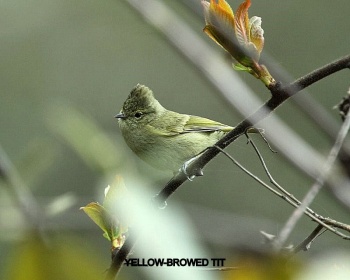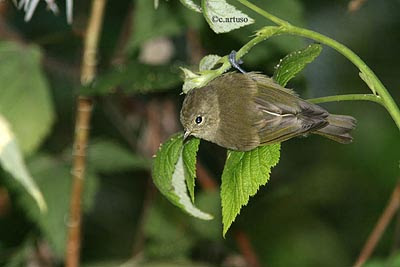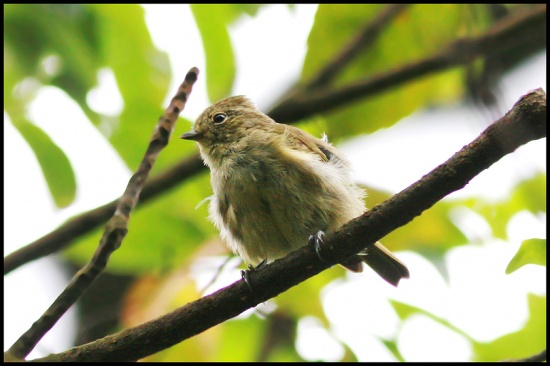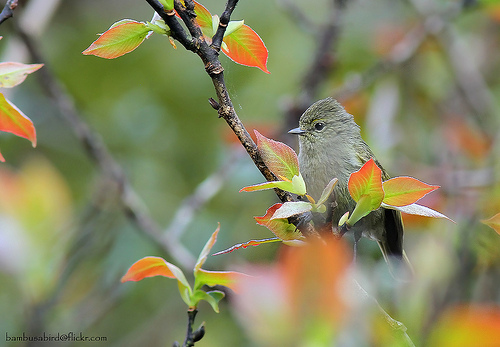
Sylviparus modestus
SUBFAMILY
Parinae
TAXONOMY
Sylviparus modestus Burton, 1836. Three subspecies.
OTHER COMMON NAMES
French: Mйsange modeste; German: Laubmeise; Spanish: Carbonero
de Cejas Amarillas.
PHYSICAL CHARACTERISTICS
4 in (10 cm); 0.2–0.3 oz (5–9 g); small greenish bird with a
short bill, pale yellow eye ring and short crest; sexes similar.
DISTRIBUTION
S. m. simlaensis: northwestern Himalayas; S. m. modestus: central
and eastern Himalayas, Myanmar, southwestern China, northern
Thailand, northern Laos, northern Vietnam; S. m. klossi:
southern Vietnam.
HABITAT
Inhabits alpine scrub and forest, occurring principally from
3,900–11,150 ft (1,200–3,400 m), but down to 1,475 ft (450 m)
in parts of range. Very localized
DISTRIBUTION
outside of the Himalayas,
including coniferous forests in China.
BEHAVIOR
Resident, but undertakes seasonal altitudinal movements, generally
moving to lower elevations outside of the breeding season.
Territoriality not understood, but joins mixed-species
flocks outside of the breeding season like most other tits. Has a
wide variety of calls.
FEEDING ECOLOGY AND DIET
Forages throughout the canopy and occasionally in scrub beneath
the tree canopy. Described as both acrobatic and restless
while foraging. Diet mainly invertebrates, but also takes some
seeds.
REPRODUCTIVE BIOLOGY
Poorly understood. Nests in natural cavities in trees. Breeds
April through May. Clutch size four to six eggs, but no information
on incubation and nestling periods.
CONSERVATION STATUS
Not threatened. A common species, but with fragmented and
highly localized
DISTRIBUTION
outside of the Himalayas.
SIGNIFICANCE TO HUMANS
None known.
Other popular Animals
Photo Gallery of - Yellow-browed tit




 Animalia Life
Animalia Life